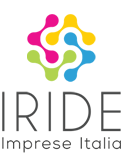Dal quotidiano “THE WALL STREET JOURNAL”: Economic Growth Accelerates, Defying Slowdown Expectations
Share
Economic Growth Accelerates, Defying Slowdown Expectations
BY SARAH CHANEY CAMBON AND CHRISTIAN ROBLES · 28 Lug 2023
Faster economic growth this spring raises the prospect of a longer postpandemic expansion despite the Federal Reserve pushing interest rates to a two-decade high.
Gross domestic product grew at a seasonally- and inflation-adjusted 2.4% annual rate in the second quarter, the Commerce Department said Thursday. That was faster than economists expected and above the 2% growth in the first three months of the year.
Consumer spending cooled but rose enough to drive overall growth alongside much stronger business investment in the second quarter. Those factors combined to buck economists’ earlier expectations that a downturn would start in the middle of this year due to higher interest rates.
As inflation falls from historic highs and the labor market remains strong, solid growth adds to the prospect of a soft landing—in which inflation returns close to the Federal Reserve’s 2% target without a recession.
“We’ve turned the corner on the risk here, and instead of being heavily weighted to recession, it’s balanced between recession and not recession,” said Amy Crews Cutts, chief economist at AC Cutts & Associates, before the data was released.
U.S. stock indexes moved lower Thursday. The Dow Jones Industrial Average fell 237.40 points, or 0.67%, ending a 13-session streak of gains. The broader S&P 500 index declined 0.64% and the techheavy Nasdaq Index fell 0.55%.
The Fed raised its bench
mark interest rate on Wednesday by a quarter percentage point to a range between 5.25% and 5.5%, a 22-year high. Fed Chair Jerome Powell said any further increases would depend on whether inflation and economic activity was slowing in line with officials’ forecasts.
“We have to be ready to follow the data, and given how far we’ve come, we can afford to be a little patient, as well as resolute, as we let this unfold,” he said.
The economy has expanded at better than a 2% pace during the past year, following a mild contraction in early 2022. Economic growth is roughly in line with the rate recorded in the decade before the pandemic took hold.
Consumer spending grew at an annual rate of 1.6% in the second quarter, down from 4.2% growth in the first quarter. Household outlays account for the bulk of economic activity and were responsible for nearly half of the total rise in GDP.
The slowdown largely reflected cooling purchases of big-ticket items after Americans snapped up vehicles at the start of the year as they flowed back onto dealership lots.
Cooler consumer spending in recent months also reflects lower gasoline prices, Visa Chief Financial Officer Vasant Prabhu said Tuesday. The average price of a gallon of regular gasoline is down about 60 cents from a year earlier, according to energy-data provider OPIS. Otherwise, spending has largely been consistent, Prabhu said.
Consumer spending “from affluent to low spend remained stable since March,” he said. “Our data did not indicate any behavior change across consumer segments.”
Americans are benefiting from a strong labor market in which wage gains recently surpassed cooling inflation. Initial claims, a proxy for layoffs, declined by 7,000 last week to a seasonally adjusted 221,000, the Labor Department said Thursday. That is a historically low level that essentially matches the 2019 average, when the labor market was also strong.
Gus Ayala, a 73-year-old retired banker, is splurging on a few big purchases while trimming back on some everyday items. The El Mirage, Ariz., resident plans to buy a hybrid car later this year and will likely finance the vehicle, rather than pay in cash for it. He and his wife’s savings buffer is helping pay for his wife’s coming trip to Iceland.
“We want to go spend money on what benefits us and allows us to enjoy our life,” Ayala said.
Ayala changed some of his spending habits to cope with elevated inflation. He switched to a cheaper brand of coffee, Seattle’s Best, earlier this year after the cost of a 12-ounce bag of his preferred brand shot up to $12 from $9 last year.
Business investment grew at an annual rate of 7.7% in the second quarter, up sharply from 0.6% in the first quarter.
Some long-term forces are helping boost investment despite higher interest rates. A surge in federal spending on chip-manufacturing plants and electric-vehicle factories is offsetting some other cutbacks.
Business spending on equipment bounced back in the second quarter, largely because of investments in aircraft and vehicles as supplychain snarls unravel. As that process unwinds, equipment and machinery spending will likely weaken again, said Richard F. Moody, chief economist at Regions Financial, in a note.
Net trade slightly subtracted from second-quarter growth, reflecting a sluggish global economy. Residential investment declined for the ninth consecutive quarter. Recent declines in residential investment reflect housing-market strains amid higher mortgage rates.
Still, a long-running shortage of previously owned homes is helping support new construction. The worst of the housing-market downturn could be in the past, meaning residential investment could grow in the coming months.
Whether consumers and businesses will spend at the same pace later this year isn’t clear. High interest rates will persist, making borrowing for vehicles, appliances, factory machines and construction projects more expensive.
The chief financial officer at Unilever said consumers in North America are “starting to show signs of caution” as they spend off the excess savings built up during the pandemic. “We still think there’s a possibility of a mild recession,” CFO Graeme Pitkethly said.














